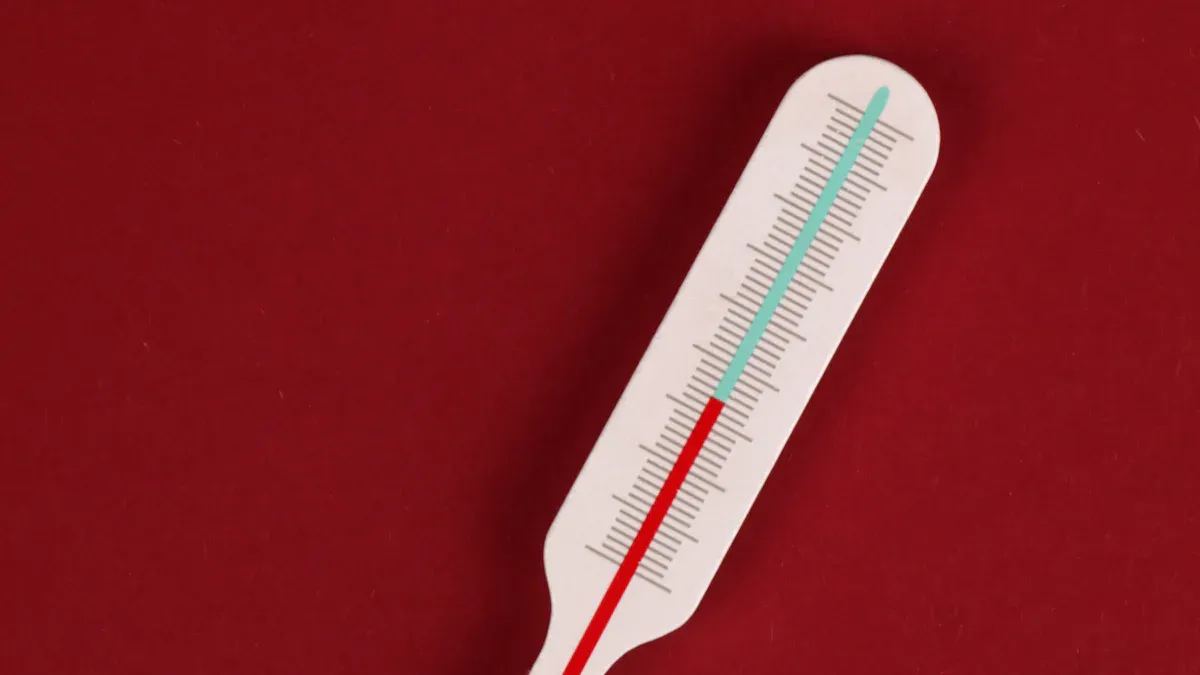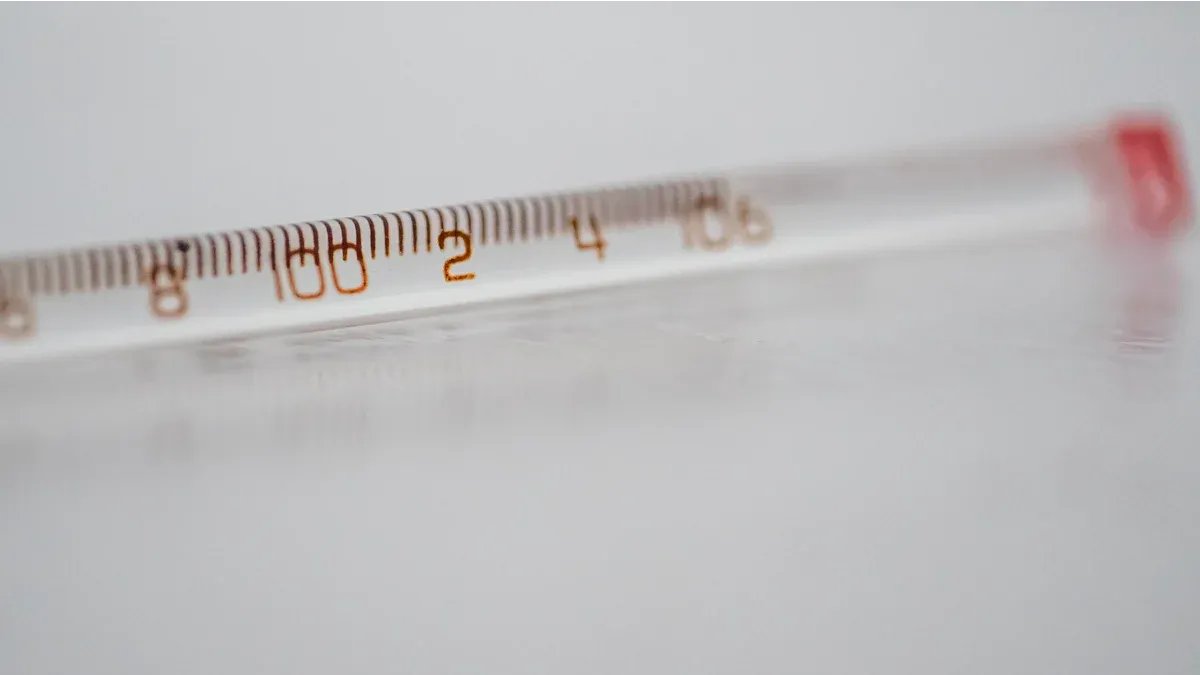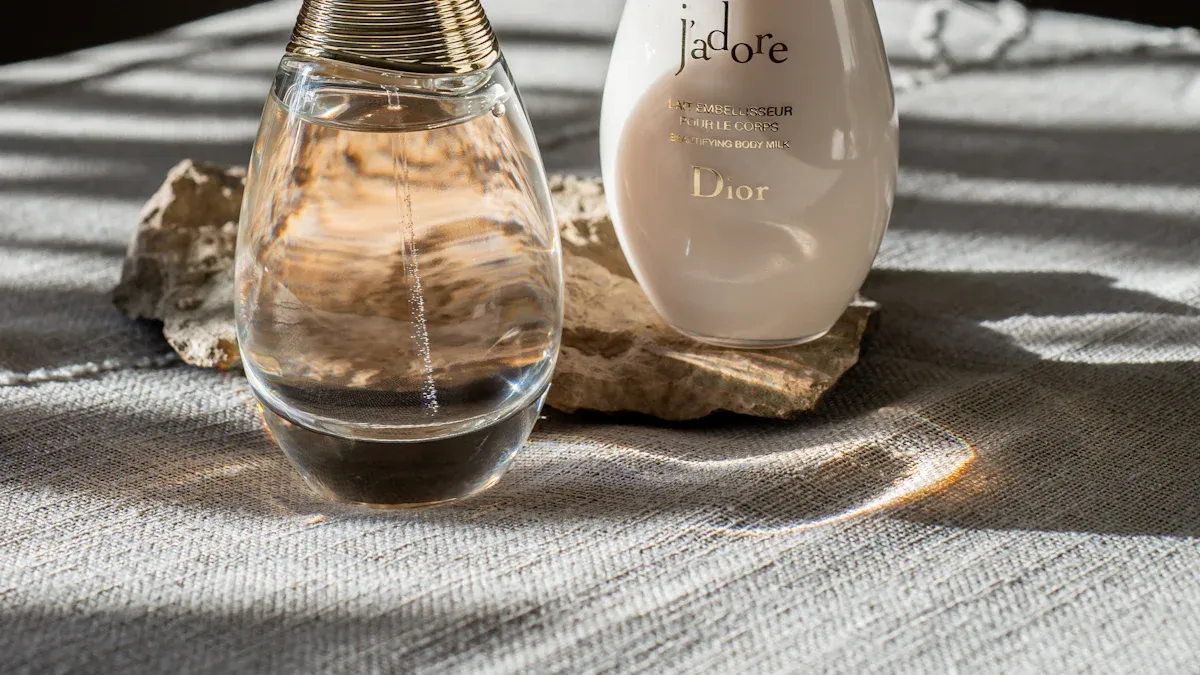
Ever wondered why your Galileo thermometer is not working as it should? The most common culprits include placing it in the wrong spot or exposing it to extreme temperatures. For instance, if it’s near a sunny window or an air vent, that could mess with its accuracy.
Quick fix? 🛠️ Move it to a stable, room-temperature spot and see if that helps. If the floating bulbs seem stuck, give it a gentle shake—sometimes that’s all it takes! Don’t worry, though. Most of these problems, like a Galileo thermometer not working, are super easy to solve, and I’m here to guide you through it.
Common Reasons Why a Galileo Thermometer Might Stop Working
Galileo thermometers are cool and usually reliable. But sometimes, they stop working right. Let’s look at why this happens and how to notice the signs.
Wrong Placement in Your Home
Where you put your thermometer really matters! 🏠 If it’s near a heater or in sunlight, the heat around it can mess up its readings. The same goes for spots near air vents or drafty windows. These places can make the floating bulbs act strangely.
What should you do?
Put it somewhere with steady temperature, away from heat or cold.
Stay clear of places with moving air, like near fans or vents.
Tip: A shaded corner or a bookshelf is a great place for your Galileo thermometer!
Extreme Temperatures Can Cause Problems
Very hot or cold temperatures are bad for Galileo thermometers. 🌡️ If it gets too hot or too cold, the liquid inside might expand or shrink too much. This can make the bulbs stick or even damage the thermometer.
How to fix it:
Move the thermometer to a room with normal temperature.
Leave it alone for a few hours to settle.
Warning: If it’s been in extreme heat, check for cracks or leaks in the glass. Be careful!
Dust or Dirt Inside the Thermometer
Have you seen tiny bits floating in the liquid? 🧹 Dust or dirt can get inside over time, especially if it’s not cleaned often. These bits can block the bulbs from moving properly, making the thermometer seem broken.
What can you do?
Wipe the outside gently with a soft cloth to keep dust out.
If the problem doesn’t go away, check the liquid for dirt.
Note: If the liquid is dirty, you might need expert help or a new thermometer.
Fluid Separation or Contamination
Have you seen the liquid in your Galileo thermometer look odd? Fluid separation or contamination might be the reason. This happens when the liquid splits into layers or turns cloudy because of dirt. It’s not just ugly—it can also make the thermometer give wrong readings.
How Can You Spot Fluid Issues?
Here’s what to check for:
Cloudy liquid: The liquid should be clear. If it’s foggy, there’s an issue.
Separated layers: If the liquid splits into parts, the bulbs won’t float right.
Floating debris: Small bits inside the liquid can stop the bulbs from moving.
Tip: Hold the thermometer near a light. This helps you see any cloudiness or layers.
What Causes Fluid Problems?
Fluid issues can happen for a few reasons:
Extreme temperatures: Heat or cold can change the liquid.
Physical damage: Dropping it might crack the glass and let dirt in.
Age: Over time, the liquid can break down or lose its quality.
How Do You Fix It?
If you notice fluid problems, try these steps:
Shake it gently: A soft shake might mix the liquid back together.
Let it sit at room temperature: Leave it in a steady spot for a few hours to settle.
Check for cracks: If the glass is broken, the liquid might be dirty. You may need a new thermometer.
Warning: Don’t open the thermometer or try to fix the liquid yourself. It’s tricky and needs special tools.
How Can You Prevent Fluid Problems?
It’s better to stop problems before they start. Here’s how to care for your Galileo thermometer:
Keep it out of sunlight: Sunlight can ruin the liquid over time.
Avoid heat sources: High heat can cause the liquid to separate.
Handle it carefully: Being rough can crack the glass and let dirt in.
Remember: Treat your Galileo thermometer like a delicate treasure. A little care keeps it working and looking great.
How to Identify the Problem
If your Galileo thermometer isn’t working as it should, don’t worry! Identifying the issue is easier than you might think. Let’s break it down step by step.
Check the Floating Bulbs for Proper Movement
Are the bulbs stuck or not floating as expected? This is one of the first things I check when my thermometer acts up. The bulbs should move freely in response to temperature changes. If they’re stuck at the top or bottom, something’s off.
Here’s what you can do:
🛠️ Gently shake the thermometer to see if the bulbs loosen up.
🧹 Inspect for dirt or debris inside the liquid that might block their movement.
Tip: Don’t shake too hard! A gentle motion is enough to free the bulbs without risking damage.
Inspect the Liquid for Cloudiness or Separation
Does the liquid look cloudy or layered? This can mess with the thermometer’s accuracy. The liquid should be crystal clear, with no floating particles or strange layers.
To check for issues:
Hold the thermometer up to a light source.
Look for cloudiness, floating debris, or separated layers.
If you spot any of these, the thermometer might need time to stabilize in a room-temperature environment. In some cases, though, contamination or age could be the culprit.
Warning: If the liquid looks severely damaged, it might be time to consider a replacement.
Assess the Thermometer’s Placement and Environment
Is your thermometer in the right spot? Placement plays a huge role in how well it works. I’ve learned that areas with direct sunlight, drafts, or extreme temperatures can throw off its readings.
Here’s how to evaluate its location:
🌞 Avoid sunny windows or spots near heaters.
❄️ Keep it away from air vents or drafty areas.
📚 Place it on a stable surface, like a shelf or table, where the temperature stays consistent.
Pro Tip: A quiet corner with steady room temperature is the perfect home for your Galileo thermometer.
By following these steps, you’ll quickly figure out why your Galileo thermometer might not be working. Once you know the problem, fixing it becomes much easier!
Check for Cracks or Leaks
Do you think your Galileo thermometer might be broken? Physical damage is a common reason it stops working. Cracks or leaks can cause wrong readings or make it stop completely.
Here’s how to check for problems:
Look closely at the glass 🕵️♀️. Search for cracks, chips, or leaks. Even tiny cracks can let air or dirt in, ruining the liquid.
Notice the liquid level. If it looks lower than normal, it might have leaked. This is a clear sign of a broken thermometer.
Feel for stickiness. Leaked liquid can leave a sticky feeling on the outside. If you find this, it’s likely damaged.
Tip: Shine a flashlight on the thermometer. This makes it easier to see small cracks or leaks.
If you spot damage, don’t try to fix it yourself. Galileo thermometers are fragile, and fixing them can make things worse. It’s better to replace it if the liquid has leaked or the bulbs are stuck.
To prevent future damage, handle your thermometer carefully. Place it somewhere safe where it won’t fall or get hit. Trust me, it’s easier to protect it than to deal with a broken one!
Reminder: If you see a leak, clean the area right away. The liquid inside can sometimes be harmful.
Simple Fixes to Restore Accuracy

Sometimes, all your Galileo thermometer needs is a little TLC to get back on track. Let me walk you through a few simple fixes that can make a big difference.
Relocate the Thermometer to a Stable Environment
The first step? Find the perfect spot for your thermometer. Galileo thermometers are sensitive to their surroundings. If they’re in the wrong place, they won’t work properly.
Here’s what I recommend:
Pick a room with a steady temperature. Avoid areas that get too hot or cold, like kitchens or bathrooms.
Stay away from direct sunlight. Sunlight can heat the liquid inside and throw off the readings.
Avoid drafts. Keep it away from air vents, fans, or open windows.
Pro Tip: I’ve found that a bookshelf or a shaded corner works best. It keeps the thermometer safe and stable.
Once you’ve moved it, give it some time to adjust. Usually, it takes a few hours for the thermometer to settle into its new environment.
Gently Shake to Free Stuck Bulbs
Are the floating bulbs stuck? Don’t panic! This is a common issue, and it’s easy to fix. Sometimes, the bulbs get stuck due to dirt, temperature changes, or even just sitting in one spot for too long.
Here’s how to fix it:
Hold the thermometer firmly by the top or bottom.
Give it a gentle shake. Don’t go overboard—just a soft motion to loosen the bulbs.
Check if the bulbs start moving freely again.
Warning: Be careful not to shake too hard. Galileo thermometers are delicate, and rough handling can cause damage.
If the bulbs still don’t move, try leaving the thermometer in a stable, room-temperature spot for a while. Sometimes, they just need a little extra time to adjust.
Clean the Exterior and Inspect for Damage
A clean thermometer is a happy thermometer! Dust and dirt can build up on the outside, and even tiny particles can sneak inside if there’s a crack. Keeping it clean not only helps it look great but also ensures it works properly.
Here’s what I do:
Wipe the glass gently. Use a soft, lint-free cloth. Avoid using harsh cleaners that could damage the glass.
Inspect for cracks or chips. Look closely at the glass for any signs of damage. Even small cracks can let air or dirt in, which can mess with the liquid inside.
Check for stickiness. If the outside feels sticky, it might mean there’s a leak.
Note: If you find a crack or leak, it’s best to replace the thermometer. Trying to fix it yourself can make things worse.
Regular cleaning keeps your thermometer in top shape and prevents small issues from turning into big problems.
Let the Thermometer Adjust to Room Temperature
Did you know Galileo thermometers need time to settle? If yours isn’t working, it might just need time to adjust. These thermometers are sensitive to quick temperature changes. Sudden shifts can make them act strangely. Let me explain why this happens and how to fix it.
Why Adjustment is Important
When you move your thermometer, the liquid reacts to the new spot. If the temperature changes too fast, the bulbs may not float properly. This can make it seem broken or inaccurate. Don’t worry—it’s usually temporary!
Tip: After moving your thermometer, wait a few hours. This gives the liquid and bulbs time to adjust to the new temperature.
Steps to Help It Adjust
Here’s what I do to let my thermometer settle:
Choose a stable location. Pick a room with steady temperature. Avoid drafts, sunlight, or heat changes.
Place it on a flat surface. Make sure it stands upright and doesn’t wobble.
Leave it alone. Let it sit still for 4–6 hours. If the temperature change was big, it might take longer.
Pro Tip: If your thermometer was in extreme heat or cold, let it rest for 24 hours. This ensures everything inside adjusts fully.
Signs It’s Ready
You’ll know it’s adjusted when:
The liquid is clear, with no bubbles.
The bulbs float freely and settle correctly.
The readings match the room’s actual temperature.
If these signs don’t show after a day, there could be another problem, like stuck bulbs or dirty liquid. Check earlier tips to fix those issues.
My Own Experience
I once moved my thermometer from a cold basement to a warm living room. At first, the bulbs didn’t move, and I thought it was broken. But after leaving it on a steady shelf for a few hours, it worked perfectly again. Sometimes, patience is all you need!
Remember: Galileo thermometers are fragile. Handle them carefully, and they’ll give you accurate readings for years.
Advanced Troubleshooting Steps
What to Do if the Bulbs Are Stuck
Stuck bulbs? Don’t worry—it’s fixable! This happens when the bulbs cling to the glass or get blocked by debris. Here’s how I handle it:
Shake it gently 🌀. Hold the thermometer firmly and give it a soft shake. This often frees the bulbs without causing damage.
Check for dirt 🧹. Look closely at the liquid. If you see floating particles, they might be blocking the bulbs.
Let it rest 🕒. Place the thermometer in a stable, room-temperature spot for a few hours. Sometimes, the bulbs just need time to adjust.
Tip: If shaking doesn’t work, avoid forcing the bulbs loose. Galileo thermometers are delicate, and rough handling can break them.
How to Handle Cloudy or Contaminated Liquid
Cloudy liquid can ruin your thermometer’s accuracy. I’ve seen this happen when dirt sneaks inside or the liquid ages. Here’s what I do to fix it:
Inspect the liquid 🔍. Hold the thermometer near a light source. Look for cloudiness, floating debris, or discoloration.
Stabilize the thermometer 🌡️. Move it to a steady environment and let it sit for 24 hours. This helps the liquid settle.
Consider replacement 🛠️. If the liquid stays cloudy, it might be too contaminated to fix. You’ll need a new thermometer.
Warning: Don’t try to open the thermometer or clean the liquid yourself. It’s sealed for a reason, and tampering can cause permanent damage.
Rejoining Separated Fluids
Separated fluids? It’s tricky but not impossible to fix. This happens when the liquid inside splits into layers. Here’s how I’ve dealt with it:
Shake it gently 🤲. A soft shake can sometimes mix the layers back together.
Warm it up 🔥. Place the thermometer in a room-temperature spot for a day. Gradual warmth helps the liquid rejoin.
Check for cracks 🕵️♂️. If the glass is damaged, the liquid might be leaking or contaminated. In this case, replacement is your best option.
Pro Tip: If you’re unsure about fixing separated fluids, consult a professional. They can assess whether the thermometer can be repaired or needs replacing.
I’ve learned that Galileo thermometers are sensitive, much like mercury thermometers. They require careful handling and a stable environment to work properly. Following these steps can often restore their accuracy without much hassle.
When to Think About Professional Help or Replacement
Wondering if your Galileo thermometer can be fixed? Sometimes, calling an expert or buying a new one is better. Let’s figure out when to make that choice.
Signs You Might Need Expert Repair
Here are times when a repair expert might help:
The bulbs won’t move after trying everything.
If shaking, cleaning, and adjusting fail, the problem may be inside.
The liquid looks cloudy or split into layers.
An expert might fix the liquid if it’s not too damaged.
There’s a small crack in the glass.
Professionals can sometimes seal tiny cracks to stop more damage.
Tip: Check if your thermometer has a warranty before paying for repairs. Some companies fix certain problems for free.
When You Should Replace Your Thermometer
Not all issues can be fixed. Here’s when replacing is better:
The glass is broken or leaking.
If the liquid escapes, the thermometer won’t work anymore.
The bulbs are stuck forever.
If they won’t move after trying everything, it’s time for a new one.
The liquid is very dirty.
Dirt or debris inside can’t always be cleaned out.
Deciding Between Repair and Replacement
Ask yourself these questions:
Is repair worth the cost? Fixing it might cost as much as buying a new one.
How old is it? If it’s really old, replacing it might make more sense.
Do you love its look? If it’s special to you, repairing it could be worth it.
Pro Tip: If you buy a new thermometer, pick a high-quality one to avoid future problems.
Sometimes, replacing a broken thermometer is the easiest option. But if it can be fixed, an expert might save it. Either way, you’ll soon have a working and beautiful thermometer again!
Tips for Taking Care of Your Galileo Thermometer
Keep It Out of Sunlight and Away from Heat
Want your Galileo thermometer to work well? Keep it away from sunlight and heat. Sunlight can fade the colorful bulbs inside. This can make the thermometer less accurate. Heat from stoves or heaters can also change the liquid inside. It might expand or shrink too much.
Here’s how to protect it:
🌞 Put it in a shaded spot, like a shelf or corner.
🔥 Keep it far from heaters, stoves, or anything hot.
🪟 Avoid placing it near windows with direct sunlight.
Tip: Treat your Galileo thermometer gently, like a mercury thermometer. Both need stable temperatures to work properly.
Clean and Dust It Often
Cleaning helps your thermometer stay in good shape! Dust can gather on the glass or sneak inside through cracks. Cleaning it regularly keeps it looking nice and working well.
Here’s how I clean mine:
Wipe the glass gently with a soft cloth.
Don’t use strong cleaners—they can harm the glass.
Look for cracks while cleaning. Handle it carefully if you find any.
Pro Tip: Like mercury thermometers, Galileo thermometers need gentle care. Cleaning often helps them last longer.
Watch How It Works Over Time
Check your thermometer now and then to keep it accurate. If the bulbs stop moving or the liquid looks cloudy, it might need fixing.
Here’s what I do:
🕒 Look at the bulbs to see if they float freely.
🔍 Check if the liquid is clear, like when it was new.
📍 Make sure it’s in a steady spot with even temperature.
Reminder: Galileo thermometers are delicate tools. A little care now can prevent big problems later.
Avoid Handling It Roughly to Prevent Damage
Want your Galileo thermometer to last? Handle it with care! These thermometers are delicate, and rough handling can cause serious damage. I’ve learned this the hard way, so let me share some tips to keep yours safe.
Why Gentle Handling Matters
Galileo thermometers are made of glass. Even a small bump can crack the surface or dislodge the floating bulbs. Once the glass breaks, the liquid inside can leak, and the thermometer becomes unusable. Trust me, it’s not worth the risk.
Tip: Always treat your thermometer like a fragile treasure. Think of it as a piece of art, not just a tool.
How to Handle It Safely
Here’s what I do to protect mine:
Pick it up carefully. Hold it by the base or the thickest part of the glass. Avoid grabbing the top or squeezing too hard.
Place it on a stable surface. Make sure it’s on a flat, sturdy spot where it won’t wobble or fall.
Avoid moving it too often. The less you handle it, the lower the risk of accidents.
What to Avoid 🚫
Don’t shake it aggressively. A gentle shake is fine to free stuck bulbs, but too much force can damage the glass.
Don’t let kids or pets near it. Curious hands or paws can knock it over in seconds.
Don’t carry it around unnecessarily. Moving it increases the chances of dropping it.
Pro Tip: If you need to transport your thermometer, wrap it in a soft cloth and place it in a padded box. This adds an extra layer of protection.
By handling your Galileo thermometer gently, you’ll keep it in perfect condition for years. It’s a small effort that pays off big time! 😊
Fixing a Galileo thermometer is simpler than it seems! Here’s a quick summary:
🏠 Move it to a steady spot with normal temperature.
🧹 Dust it often to avoid dirt and grime buildup.
🌡️ Give it time to settle after extreme heat or cold.
🤲 Shake it lightly to loosen any stuck bulbs.
These easy steps solve most problems. Handle your thermometer gently, and it will work well for years. Keeping it clean and placing it correctly are key to its accuracy!
Tip: Be patient and careful—these fragile tools need extra care.
FAQ
What should I do if my Galileo thermometer stops working suddenly?
First, check its placement. Make sure it’s in a stable, room-temperature spot. If the bulbs are stuck, give it a gentle shake. Inspect the liquid for cloudiness or debris. These quick fixes usually solve the problem.
Tip: Avoid placing it near heat sources or direct sunlight! 🌞
Can I fix cloudy liquid inside the thermometer?
Not really. Cloudy liquid often means contamination or aging. You can try letting it rest in a stable environment for 24 hours. If it doesn’t clear up, replacing the thermometer might be your best option.
Warning: Don’t open the thermometer—it’s sealed for a reason! 🚫
How do I prevent the bulbs from getting stuck?
Keep the thermometer clean and stable. Dust it regularly and avoid shaking it unnecessarily. Place it in a spot with consistent temperature. These steps help the bulbs float freely and stay accurate.
Pro Tip: Handle it gently to avoid damage. 🤲
Is it safe to shake the thermometer to fix stuck bulbs?
Yes, but be gentle. A soft shake can free stuck bulbs without causing damage. Hold it firmly and avoid shaking too hard. If the bulbs don’t move, let the thermometer rest in a stable spot for a few hours.
Reminder: Galileo thermometers are fragile, so treat them carefully! 💡
When should I replace my Galileo thermometer?
Replace it if the glass is cracked or leaking. Also, if the liquid stays cloudy or the bulbs won’t move after troubleshooting, it’s time for a new one. Repairs can be tricky and often cost more than buying a replacement.
Tip: Invest in a high-quality thermometer for better durability. 🛠️





